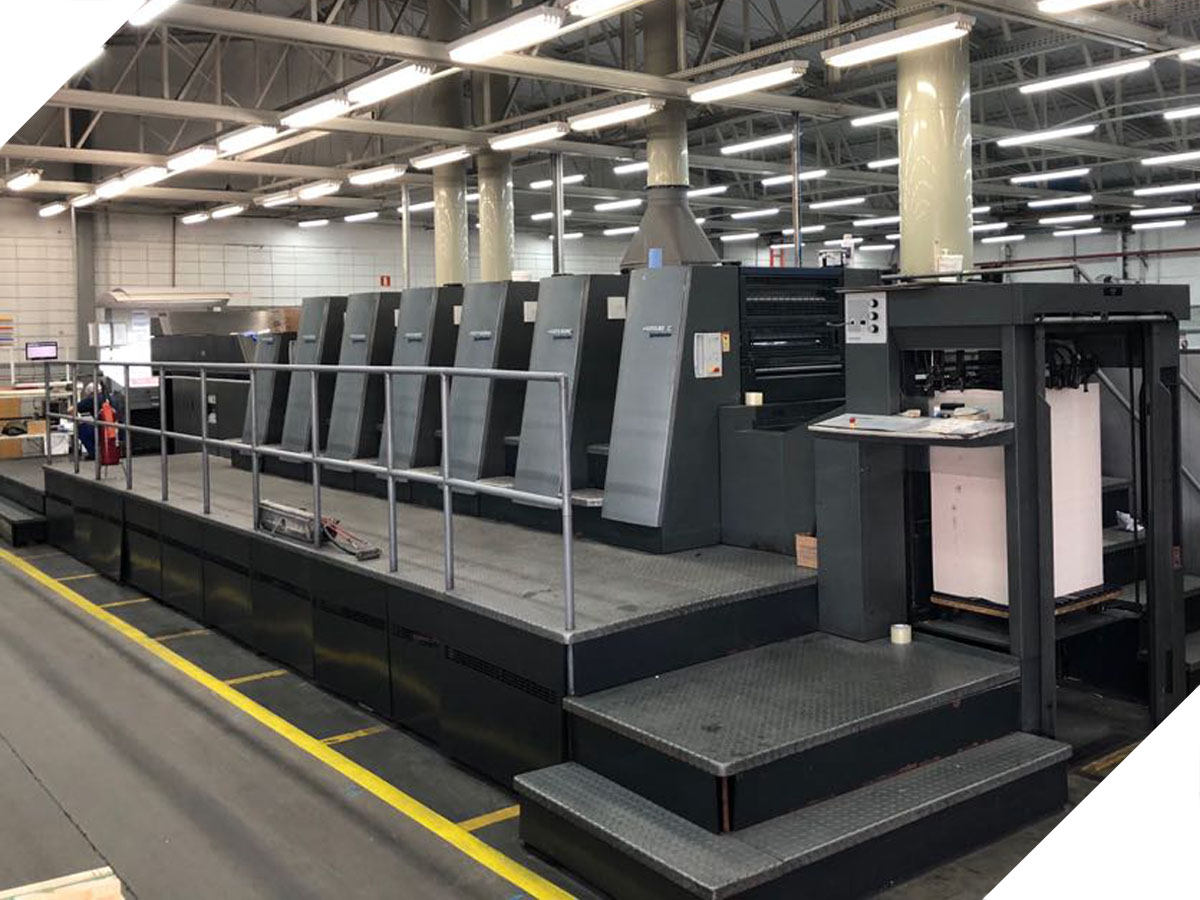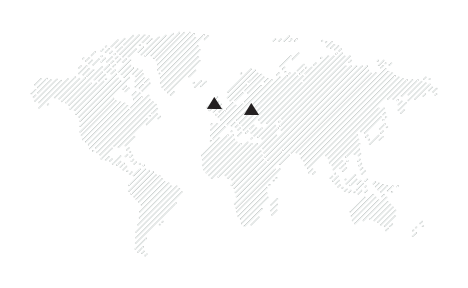Rebranding of a Sheetfed Offset Printing Company
The first phase of the project involved market research on packaging products and an audit of existing technological processes. It was determined that the current equipment could ensure high print quality, but the prepress department needed modernization, along with the implementation of a color management system to handle dense designer materials.
The next crucial step was sourcing and purchasing printing equipment for the new division. Since acquiring brand-new printing machines was too costly, the decision was made to opt for high-quality, pre-owned models. After analyzing the market and consulting with technical specialists, the company acquired a Heidelberg XL106-6-LX (2014) and an XL105-5+L (2011). These machines provided high-quality printing on packaging materials and sufficient productivity to handle large print runs.
Additionally, die-cutting presses and folder-gluers from Bobst were purchased, including one machine equipped with a hot-foil stamping unit. This expansion enabled the company to offer premium packaging with foil embellishments, thereby increasing its competitiveness and service range.
Once the equipment was installed, a calibration process was conducted to fine-tune the printing workflow. This included configuring ICC profiles to meet the color requirements for packaging production. Several solutions were tested before selecting GMG ColorProof software, which ensured stable color reproduction. These adjustments allowed for consistent color matching across different print runs and improved the accuracy of complex designer shades.

Each of our experts has training certificates from the Print Media Academy of Heidelberg Druckmaschinen, the company we have been working for for many years. So we can confidently say that we can take apart any Heidelberg printing machine, strip it down to its screws and tell you what each one is for.
We are available to help you with your printing technology needs or to advise you on the selection of a new or used machine. We have run technologies such as IML, lenticular printing, embossing on SM74 at various companies, so I would be delighted if my knowledge and experience could be of use to you. Just write and we will find a way to make you better than your competitors.
To support the new brand concept, the company’s website was completely redesigned. The focus was placed on visualizing finished packaging solutions, and a print-run calculator was added. The initial version of the calculator lacked flexibility and did not account for complex packaging configurations, so it had to be refined during real-world usage.
An essential part of the rebranding process was recruiting and training personnel. A dedicated customer service department for packaging clients was established, and we assisted in hiring managers with experience in the packaging industry. Training printing operators to work with new materials took longer than anticipated, delaying the launch of initial orders. However, this extra effort ultimately helped prevent production defects in the long run.
One of the key achievements was obtaining ISO certification for production, made possible by the implemented technological improvements. This certification increased trust among major clients, particularly international companies that require stringent quality control measures.
The results of the rebranding became evident within six months. Orders for packaging increased by 35%, while the average print run size grew by 50%. Clients began recommending “PrintMaster” as a reliable supplier of premium packaging, leading to a rise in the Net Promoter Score (NPS) from 68% to 85%.
The experience with “PrintMaster” demonstrated that a comprehensive approach to rebranding—including technological modernization, visual identity enhancement, and workforce development—enables companies not only to adapt to changing market conditions but also to enter a new, more profitable niche.
The next step was to establish a new brand identity. A positioning concept was developed to emphasize the company’s focus on premium packaging. The newly designed brand visuals, including a logo, corporate identity, and the slogan “Your Brand in Every Detail,” were approved after several iterations with the client. The initial minimalist logo design was rejected due to its association with digital printing, so we proposed a more traditional solution incorporating typographic textures.

- Note 1. On our website we respect the principles of confidentiality. We are keenly interested in the development of our clients, who would not be very happy with the emergence of competitors who want to repeat their experience.
- Note 2. The point of the case study is for our potential customers to familiarise themselves with our company’s experience. Blind copying of the case study will not lead to a positive result, as each business, as well as location, is purely individual.


